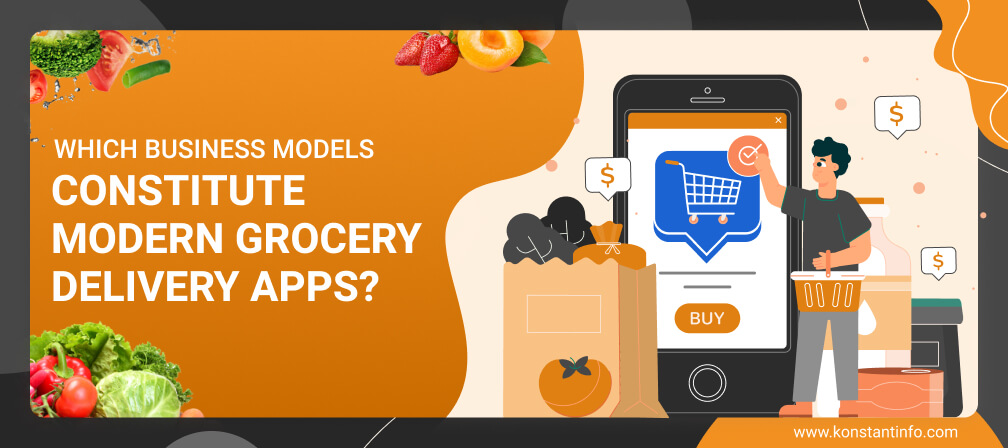
As stores were coerced to propel their digital operations, owing to COVID-struck-lockdown, retailers were bound to dive into payment flow, user experience, online transactions, and click-and-collect orders to channelize their Omni-channel approach in business. Not every business was ready to shift their focus the way it happened during 2020. To find a way out to satisfy the increase in demand, businesses have resorted to multiple payment methods including EMI and Pay-Later.
With an increase in disposable income coupled with social-distancing norms in place, customers shop around online to find the deals that work best for them. Now e-retailers want their customers to fill up their baskets at the earliest and do not give them a chance to reconsider their purchases and simultaneously make the checkout process as fluid and user-friendly as possible. It becomes important for an e-commerce business to inspire confidence in their customers during the checkout process; otherwise, they might leave without making any purchase and almost certainly won’t return. This accentuates the need to have a good user experience, the safety of transactions with a broad variety of payment options, plus all the tricks that they have been practicing offline are required to traverse the digital path now. e-retailers need to practice agility and create resiliency to their business taking an omnichannel approach that builds in technology to support and help you grow.
Retailers across the globe have surpassed their quarterly revenue from 49% (Q1) to 68% (Q4) in 2020. This is a 129% increase as compared to last year. The increase in online conversion rates is reflective of the current holiday season owing to Black Friday, Small Business Saturday, Cyber Mondays, Thanks Giving over to Christmas and New Year. (Sourced from Quantum Metrics, Forbes)
Ecommerce saves time, helps consumers make smart choices, makes them efficient and additionally it helps retailers act smart by being able to manage their orders/inventory/revenue/supply chains online – which is energy saving. Alternatively, e-commerce retailers can use the same intensity to create a unique customer experience online. This perception is going to build and redefine the future shopping scenario.
Customers no longer wish to trade their online experience for security/privacy. Businesses need to personalize web content, check the pricing, offers, promotions, customize security, know the user type, know the devices used to login into the app, know the device specifics, check the IP risk, check the geo-location, analyze the custom data, define a micro-segmentation based strategy, identifying and segmenting customers based on their common characteristics like their shopping preferences helps identify their probability to return even if they log in from different locations or new devices.
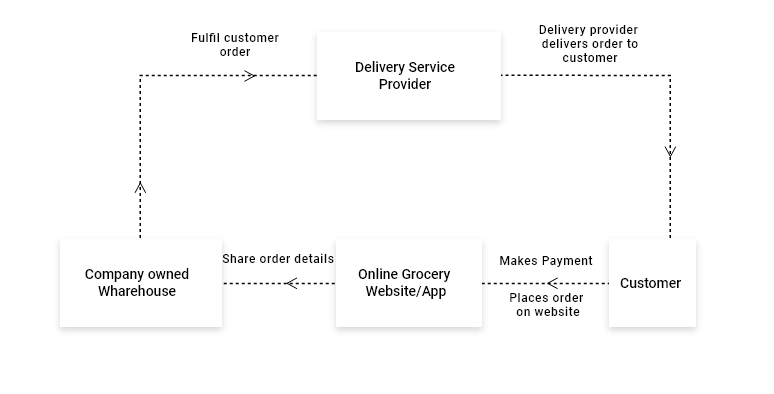
This is the single-vendor model, requires setup in a warehouse, and is expensive. As the customer places the order online, it has to be picked up from the seller/vendor who sells it, has to be packed and labelled by the e-commerce platform with their branding, and then has to be shipped across to the customer. This takes time and costs much. This model is slowly being replaced by multi-vendor marketplaces but this looks promising for online grocery retailers. E.g.: BigBasket which markets private labels like Fresho.
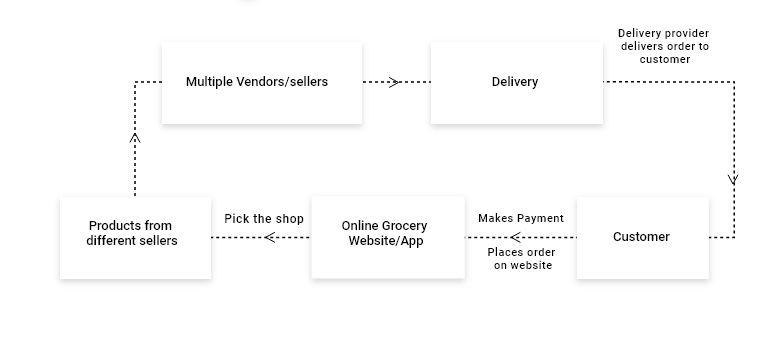
This model is also followed by Amazon. Customers are connected with local grocery retailers/shops where they can select their groceries. They have to make their payments online on this multi-vendor marketplace. Groceries come with a shelf life so these are non-returnable, but just in case any of the businesses follow this multi-seller model, the customers need to convey their concerns directly to the seller. It is up to the discretion of the seller whether they approve the return request or not.
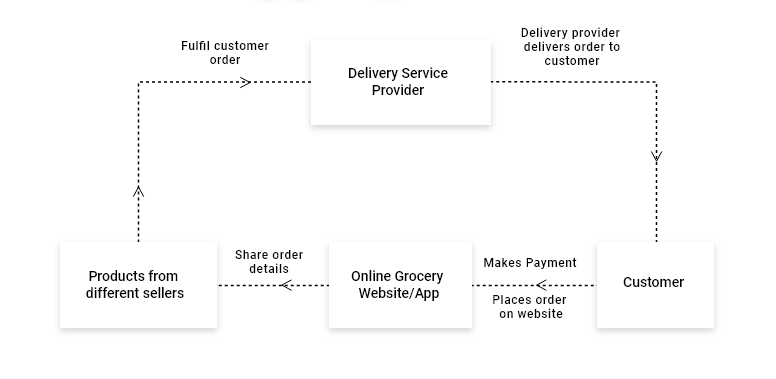
This model allows customers to browse through their app online, make payment online, and then collect their groceries from the store. This saves time and delivery costs. Retailers also do not have to align delivery guys for door-to-door service.
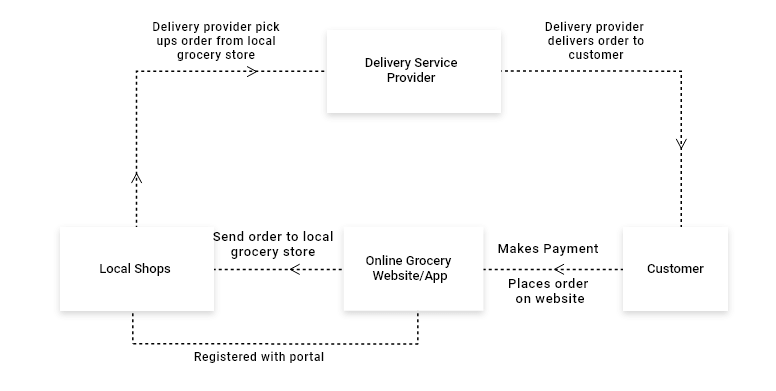
This model serves a niche area with local offline stores and service providers granting new leases to their companies. They provide fast services as it is localized within a closed area. The items are picked and packed within an hour of ordering and dispatched soon after the invoice is created.
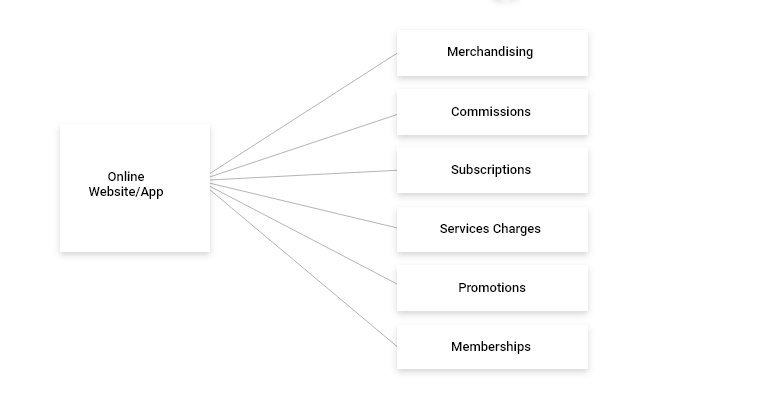
Ecommerce multi-vendor platforms can earn via merchandising, commissions, subscriptions, service charges, promotions, and memberships.
This involves companies partnering with supermarket chains to go online. This allows them to collect orders and deliver with branding. This model saves warehouse costs.
This model suits those grocery businesses that do not have a physical store and they buy directly from the farmlands, stock it into their warehouses, and then sell it online. E.g: FreshDirect
The hybrid model is a combination of the warehouse pick model and the clicks and collects model.
If you are looking to create an app like Instacart and are potentially perplexed about the monetization-pricing-cost-business model to align with your app, researching alternative grocery apps and multi-vendor marketplaces can be an option. Moreover, you need to check the potential, viability and scope of your grocery business, the target audience and demographics, are you planning to localize it or make it cross-border, have you collected customer references already, and do you also wish to target nationwide stores or other industry groups? We are here to discuss all this and more for your next grocery delivery app project. Tune in to us here.
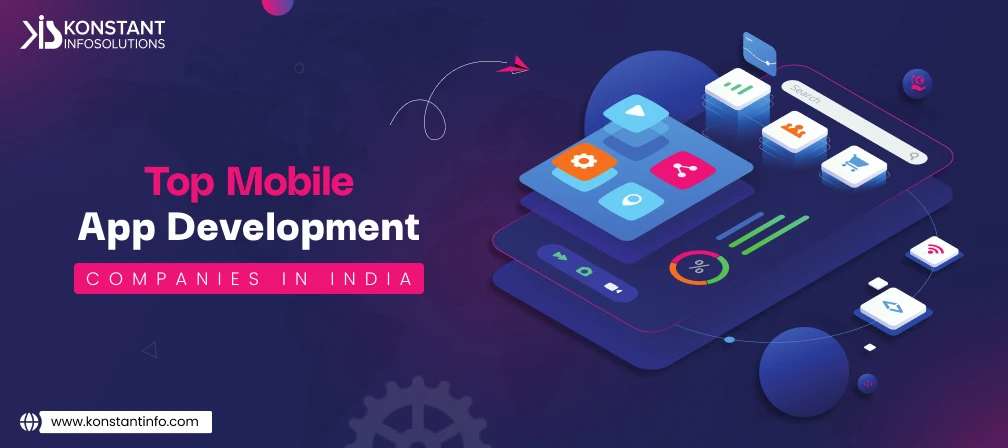
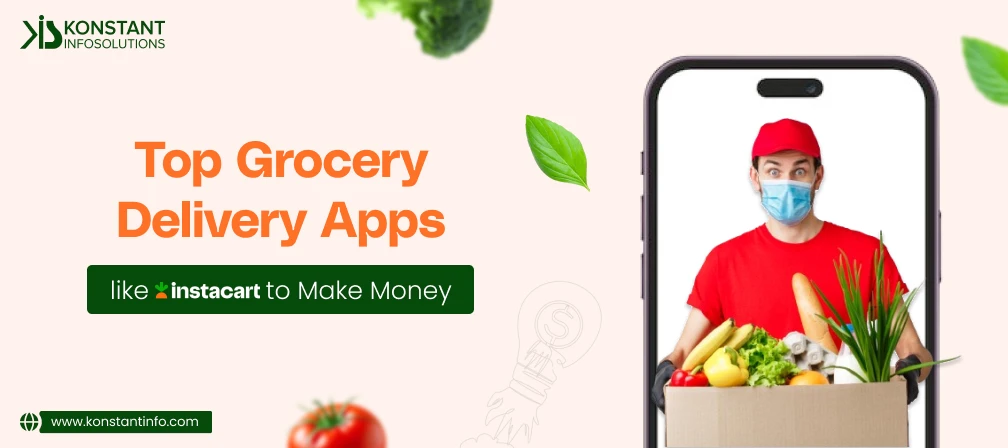
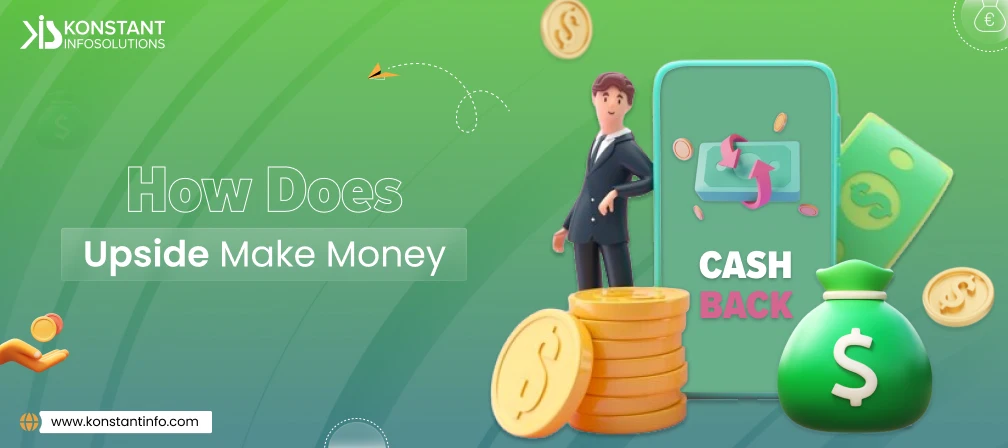
Vipin Jain is the Co-Founder and CEO at Konstant Infosolutions and is in charge of marketing, project management, administration and R&D at the company. With his marketing background, Vipin Jain has developed and honed the company’s vision, corporate structure & initiatives and its goals, and brought the company into the current era of success.
Or send us an email at: [email protected]